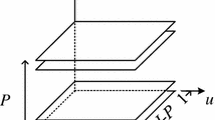Abstract
In this paper, a reweighted \(l_1\) norm penalty algorithm for direction of arrival (DOA) estimation in monostatic multiple-input multiple-output radar is proposed. In the proposed method, exploiting the inherent multidimensional structure of received data after matched filtering, the singular value decomposition (SVD) technique of the data matrix is employed to reduce the dimension of the received signal. Then a novel weight matrix is designed for reweighting the \(l_1\) norm minimization by exploiting the coefficients of the reduced-dimensional Capon (RD-Capon) spatial spectrum. The proposed algorithm enhances the sparsity of the solution by the reweighted \(l_1\) norm constraint minimization, and the DOAs can be estimated by finding the non-zero rows of the recovered matrix. Owing to utilizing the SVD technique and the novel weight matrix, the proposed algorithm can provide better angle estimation performance than RD-Capon and \(l_1\)-SRACV algorithms. Furthermore, it is suitable for coherent sources and has a low sensitivity to the incorrect determination of the source numbers. The effectiveness and superior performance of the proposed algorithm are demonstrated by numerical simulations.







Similar content being viewed by others
References
Candes, E. J., Wakin, M. B., & Boyd, S. P. (2008). Enhancing sparsity by reweighted \({l_1}\) minimization. Journal of Fourier Analysis and Applications, 14(5), 877–905.
Chan, F. K. W., So, H. C., Huang, L., et al. (2014). Underdetermined direction-of-departure and direction-of-arrival estimation in bistatic multiple-input multiple-output radar. Signal Processing, 104, 284–290.
Donoho, D. L., Elad, M., & Temlyakov, V. N. (2006). Stable recovery of sparse overcomplete representation in the presence of noise. IEEE Transactions on Information Theory, 52(1), 6–18.
Grant, M., & Boyd, S. (2012). CVX: MATLAB software for Disciplined Convex Programming, version 1.22.
He, Z. Q., Shi, Z. P., & Huang, L. (2014). Covariance sparsity-aware DOA estimation for nonuniform noise. Digital Signal Processing, 28, 75–81.
Hu, N., Ye, Z., Xu, D., et al. (2012). A sparse recovery algorithm for DOA estimation using weighted subspace fitting. SignalProcessing, 92(10), 2566–2570.
Huang, P., Wang, H., & Cheng, Y. (2013). Non circular rootmusic algorithm for monostatic MIMO radar. IEICE Electronics Express, 11(13), 1–7.
Krim, H., & Viberg, M. (1996). Two decades of array signal processing research: The parametric approach. IEEE Signal Processing Magazine, 13(7), 67–94.
Li, J., & Stoica, P. (2007). MIMO radar with colocated antennas. IEEE Signal Processing Magazine, 24(5), 106–114.
Li, J., & Stoica, P. (2008). MIMO radar signal processing. New York: Wiley.
Liao, B., & Chan, S. W. (2015). Direction finding in MIMO radar with unknown transmitter and/or receiver gains and phases. Multidimensional Systems and Signal Processing. doi:10.1007/s11045-015-0368-x.
Malioutov, D., Cetin, M., & Willsky, A. S. (2005). A sparse signal reconstruction perspective for source localization with sensor arrays. IEEE Transactions on Signal Processing, 53(8), 3010–3022.
Stoica, P., & Nehorai, A. (1990). Performance study of conditional and unconditional direction-of-arrival estimation. IEEE Transactions on Signal Processing, 38(10), 1783–1795.
Sturm, J. F. (1999). Using SeDuMi 1.02, a MATLAB toolbox for optimization over symmetric cones. Optimization Methods and Software, 11–12, 625–653.
Wang, W., Wang, X., & Li, X. (2013). Conjugate unitary ESPRIT algorithm for bistatic MIMO radar. IEICE Transactions on Electronics, 96(1), 124–126.
Xu, L., Li, J., & Stoica, P. (2008). Target detection and parameter estimation for MIMO radar systems. IEEE Transactions on Aerospace and Electronic Systems, 44(3), 927–939.
Yin, J., & Chen, T. (2011). Direction-of-arrival estimation using a sparse representation of array covariance vectors. IEEE Transactions on Signal Processing, 59(9), 4489–4493.
Zhang, X., Huang, Y. P., Chen, C., et al. (2012). Reduced-complexity Capon for direction of arrival estimation in a monostatic multiple-input multiple-output radar. IET Radar, Sonar and Navigation, 6(8), 796–801.
Zhang, X., & Xu, D. (2010). Angle estimation in MIMO radar using reduced-dimension Capon. Electronics Letters, 46(12), 860–861.
Zheng, G., & Chen, B. (2015). Unitary dual-resolution ESPRIT for joint DOD and DOA estimation in bistatic MIMO radar. Multidimensional Systems and Signal Processing, 26(1), 1–17.
Author information
Authors and Affiliations
Corresponding author
Rights and permissions
About this article
Cite this article
Liu, Q., Wang, X. Direction of arrival estimation via reweighted \(l_1\) norm penalty algorithm for monostatic MIMO radar. Multidim Syst Sign Process 29, 733–744 (2018). https://doi.org/10.1007/s11045-016-0392-5
Received:
Revised:
Accepted:
Published:
Issue Date:
DOI: https://doi.org/10.1007/s11045-016-0392-5




